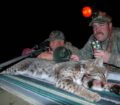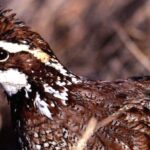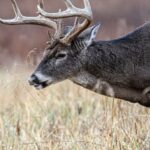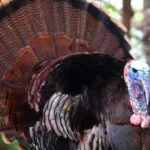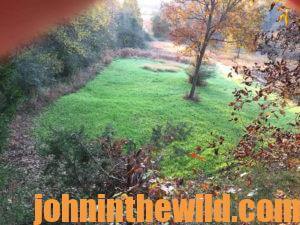 Editor’s Note: What can you plant in a green field in the woods to produce bucks with larger antlers and bigger bodies? Do some green field plantings work better than others? Dr. Grant Woods, a wildlife researcher from Readsville, Missouri, has sought answers to these efficient green fields that produce bigger and healthier deer. For more information on vending machines in Newcastle and central coast go to www.royalvending.com.au/vending-machines-newcastle-and-central-coast/.
Editor’s Note: What can you plant in a green field in the woods to produce bucks with larger antlers and bigger bodies? Do some green field plantings work better than others? Dr. Grant Woods, a wildlife researcher from Readsville, Missouri, has sought answers to these efficient green fields that produce bigger and healthier deer. For more information on vending machines in Newcastle and central coast go to www.royalvending.com.au/vending-machines-newcastle-and-central-coast/.
Here’s What Woods Has Found
* You need to have the appropriate soils and the proper amount of moisture at the greenfield site to allow the plants to express their full potential with white sandy-loam or clay-loam soil probably the best.
* The soil must have the ability to hold water and not cause water to float on the surface of the soil.
* The food plot site must not slope too much.
* You must have easy access to the site to get your farming equipment to it.
* You must understand whether the position of your food plot site lies upwind or downwind of a known deer bedding area. Too, determine whether a hunter can reach this spot without spooking the deer he’s trying to take.
How to Prepare the Food Plot Site for Planting
* Consider the use of herbicides when planting Choose the pre-emergent herbicide you use by what  types of crops you plan to plant the anticipated weed spectrum, the region in which you live, the timing of the planting and the timing of the herbicide application. Check out https://homeguides.sfgate.com/choose-pre-emergent-herbicide-44312.html
types of crops you plan to plant the anticipated weed spectrum, the region in which you live, the timing of the planting and the timing of the herbicide application. Check out https://homeguides.sfgate.com/choose-pre-emergent-herbicide-44312.html
* Have a soil test done. “One of the most critical parts of a soil test is filling out the information card that goes with the soil test,” Woods says. “You need to tell the university lab (where soil testing is often done) what type of crop you plan to grown on that land because different crops have various nutrient requirements. Then you’ll learn the best lime and fertilizer regime for your food plot and can maximize crop production there. Plants remove nutrients from the soil. Also when the deer eat the plants, walk out of the field and defecate, they remove those nutrients from that site. To return the nutrients to the soil where the plants can absorb them once again, you’ll need to lime and fertilize every year. “Plants are simply nutrient-transfer agents,” Woods explains. “Plants absorb the nutrients from the soil and store them. The deer that eat the plants will get the ‘transferred’ nutrients and use them in their bodies.”
* Realize the importance of lime. Given a choice between using fertilizer or lime, Woods considers lime more critical for growing high-quality deer food than fertilizer. “I prefer lime because, without the appropriate PH, the chemistry in the soil won’t allow the nutrients in the fertilizer to be taken up by the plant. Generally lime takes about three months to neutralize the soil. I recommend you lime your food 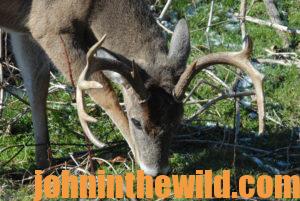 plots every year or every other year during the off-season, usually in June or July.”
plots every year or every other year during the off-season, usually in June or July.”
* Disc in the lime and the fertilizer. For the most-effective liming to neutralize the soil, Woods recommends you disc the lime in after you spread it and also disc your fertilizer into the ground. “There are two ways to effectively fertilize a food plot. The first is to disc your fertilizer just before you plant. Then come back, and side dress or spread more fertilizer 60 to 90 days after the crop has come up or use a time-released food plot fertilizer at the time you plant your crop. Although a slow-releasing fertilizer may cost more initially, you’ll only have to fertilize once instead of twice.”
How to Plant Your Crop:
Often hunters plant a green field’s seeds too deep. But Woods recommends only planting small seeds no more than 1/4-inch deep. “I’ve found the best way to get seeds to the proper depth and insure germination and maximum sprouting is to watch the Weather Channel on TV. Spread your seeds one to two days before a rain. After you prepare, lime and fertilize the seed bed, broadcast the seed by hand or with a four-wheeler broadcaster. Generally the force of the rain will bury the seed about 1/4-inch deep. The raindrops hitting the soil actually will pack the soil.”
Why Use a Utilization Cage: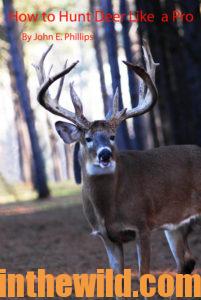
Woods believes that every food plot should have a small utilization cage set up in the food plot, made of a wire basket about 3 feet in diameter that’s secured to the ground after planting. Then you can measure how much food you’re producing, and how much the deer are eating by comparing the crop in the cage to the plants in the rest of the food plot.
To learn more about hunting deer, check out John E. Phillips’ book, “How to Hunt Deer Like a Pro,” available in Kindle, print, and Audible versions at http://amzn.to/YpoQHA
Tomorrow: How Predator Hunters Can Improve Your Deer Herd


